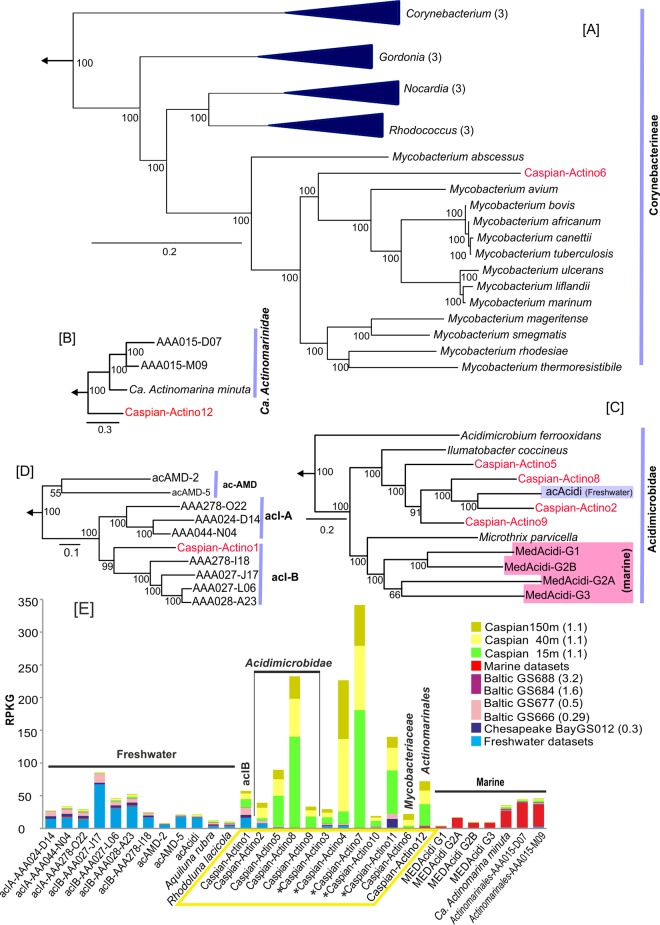FIG 4.
Phylogeny of the genomes belonging to the phylum Actinobacteria in the Caspian Sea and their metagenomic recruitment across diverse aquatic habitats. (A to D) Maximum likelihood phylogenies, obtained using a concatenation of conserved proteins, of Caspian Sea genomes and their close relatives in the suborder Corynebacterineae (226 proteins) (A), the class “Ca. Actinomarinidae” (100 proteins) (B), the subclass Acidimicrobidae (77 proteins) (C), and the acI lineage in the order Actinomycetales (165 proteins) (D). Some nodes have been collapsed for simplicity, and the number of collapsed genomes at the node is indicated in parentheses. Genomes from the Caspian Sea are shown in red, and genomes from marine water and freshwater are highlighted in blue and pink boxes, respectively. Genomes from the order Actinomycetales were used to root these trees. Bootstrap values (in percent) are indicated at each node. (E) Metagenomic recruitment of Caspian actinobacterial genomes and related reference genomes against different data sets. The data sets used are described in Fig. 1. (Left) Genomes of organisms of freshwater origin; (middle) genomes of organisms of brackish water origin; (right) genomes of organisms of marine water origin. The salinity of the samples is indicated in parentheses. An asterisk next to a Caspian Sea genome indicates a small genome (<500 kb) that could be classified only as belonging to the Alphaproteobacteria and no further.

